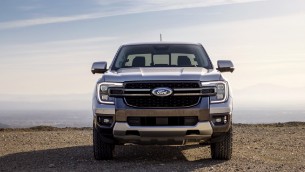10 Eco-Driving Tips For Everyone
Below are a few tips to help drivers conserve fuel and save money at the pump, while at the same time helping the environment and improving traffic safety.
1. Slow down and watch speed - Drive 55 miles per hour instead of 65 to save fuel. EPA estimates a 10-15 percent improvement in fuel economy by following this tip. Also, aim for a constant speed. Pumping the accelerator sends more fuel into the engine. Using cruise control whenever possible on the highway helps maintain speeds and conserve fuel.
2. Accelerate and brake smoothly - Accelerating smoothly from a stop and braking softly conserves fuel. Fast starts, weaving in and out of traffic and hard braking wastes fuel and wears out some of the car components, such as brakes and tires, more quickly. Maintain a safe distance between vehicles and anticipate traffic conditions to allow for more time to brake and accelerate gradually.
3. No idling - Today's engines don't need a warm up. Start the car immediately and gently drive away. Don't leave your car idling. Prolonged idling increases emissions and wastes fuel. Turn the engine off in non-traffic situations, such as at bank and fast food drive-up windows, when idling more than 30 seconds.
4. Check your tires - Keep tires properly inflated to the recommended tire pressure. This alone can reduce the average amount of fuel use by 3-4 percent. Under-inflated tires increase rolling resistance and reduce fuel economy. They also wear more rapidly. Check the vehicle's door-post sticker for minimum cold tire inflation pressure.
5. Be kind to your vehicle - Maintain proper engine tune-up to keep vehicles running efficiently. Keep the wheels aligned. Wheels that are fighting each other waste fuel. Replace air filters as recommended. Use a fuel with good detergent additives to keep the vehicle engine clean and performing efficiently. Always consult the Owner's Manual for proper maintenance.
6. Travel light - Avoid piling a lot of luggage on the roof rack. The added frontal area reduces aerodynamics and will hurt fuel economy, reducing it by as much as 5 percent. Remove excess weight from the vehicle. Unnecessary weight, such as unneeded items in the trunk, makes the engine work harder and consumes more fuel.
7. Minimize use of heater and air conditioning - Use heating and air conditioning selectively to reduce the load on the engine. Decreasing your usage of the air conditioner when temperatures are above 80 degrees can help you save 10-15 percent of fuel. Use the vent setting as much as possible. Park in the shade to keep car cool and reduce the need for air conditioning.
8. Close windows at high speeds - Don't drive with the windows open unless your keep your speed under 50 mph. Driving with the windows open at highways speeds increases aerodynamic drag on the vehicle and lowers fuel economy.
9. Choose the right oil - Use good quality, energy-conserving EC oils with the viscosity grade recommended in the Owner's Manual. Look for cans marked with the symbol ECII, which is the American Society of Testing Materials logo for fuel-efficient oils.
10. Consolidate trips - Plan ahead to consolidate your trips. This will enable you to bypass congested routes, lead to less idling, fewer start-ups and less stop-and-go traffic. Whenever feasible, share a ride and/or carpool.
For additional information on how to save on gas, visit the Driving Skills for Life website and click on the "Eco-driving" module.








